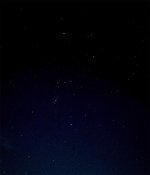- Messages
- 34
- Name
- Andy
- Edit My Images
- No
Have been looking into astro/night landscape photography. Besides the obvious requirements of tripod, remote shutter release etc,( which I posses) I have come across a possible pit fall.
My camera is a Nikon D7500 and have read in several places this isn't suitable due to the sensor size and there wil be too much noise. HNR etc will also be used.
I will be using as fast a lens as possible. ( Not purchased yet). Post production will be done using Affinity 2.
Is it worth me attempting to do that sort of photography and spending money on a suitable fast lens as well as time?
My camera is a Nikon D7500 and have read in several places this isn't suitable due to the sensor size and there wil be too much noise. HNR etc will also be used.
I will be using as fast a lens as possible. ( Not purchased yet). Post production will be done using Affinity 2.
Is it worth me attempting to do that sort of photography and spending money on a suitable fast lens as well as time?





